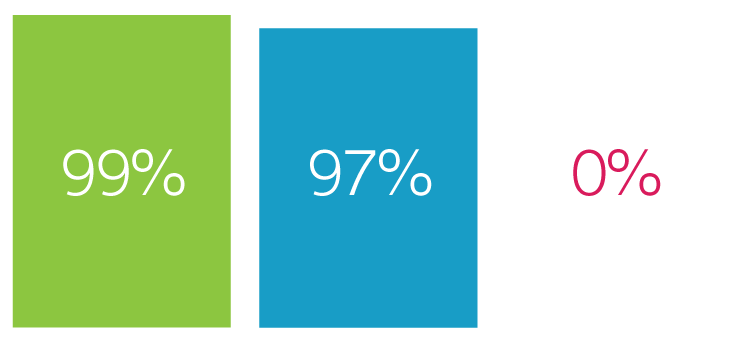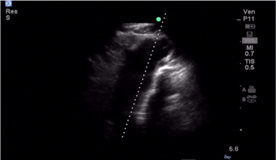I feel confidence in knowing where the tip of that needle is and I think that is a big deal. AxoTrack clearly contributes to the accuracy of the procedure; I think that’s what it brings to the game.
Mark P. Mercier, MD, Attending Physician, Emergency Medicine, Beaufort Memorial Hospital
The results are in—AxoTrack helps set the bar for first-pass success rates
AxoTrack® Needle Guidance Technology, the "point-and-shoot" simple option for central venous catheterization (CVC), has achieved a 97% first-pass success rate in 100 patients undergoing line placement. Dr. Rob Ferre, Assistant Professor of Emergency Medicine at Vanderbilt University (Nashville, TN), and Dr. Mark Mercier, Emergency Medicine Physician at Beaufort Memorial Hospital (Beaufort, SC), shared their findings at the Fall 2013 World Congress on Ultrasound in Medical Education (WCUME) meeting. Dr. Ferre, who presented the poster, also reported that 99% of patients had successful cannulation with the AxoTrack technology and no complications, including pneumothorax, hemothorax, arterial puncture, or arterial cannulation, were reported.

AxoTrack Needle Guidance Technology: Experience from 100 Patient Cases
Successful Cannulation
First Pass Success Rate
Complications
Optimal performance through a standardized approach
This retrospective review of quality assurance data from three hospitals included lines placed by both attending physicians and residents. The number of procedures performed by each group was split almost equally, with attending physicians placing ~50% of lines and residents placing the remainder.
For these physicians with varied experience levels placing central lines, the AxoTrack system offered a standard three-step approach that allowed them to consistently and efficiently achieve central venous cannulation on the first attempt.
1. PLAN: Align the on-screen target line with the intended target.
2. POSITION: Advance the needle through the guide, observing its progress, until the target is accessed. Engage the needle clamp.
3. PASS: Aspirate to confirm needle tip location and observe guidewire passage.

Re-discovering the “forgotten central line”
 And, because the AxoTrack system provides real-time information on needle tip location and a small transducer footprint, it provides practitioners with the confidence to select an optimal access site, whether it be through the internal jugular (IJ), subclavian, low IJ (supraclavicular), or femoral.
And, because the AxoTrack system provides real-time information on needle tip location and a small transducer footprint, it provides practitioners with the confidence to select an optimal access site, whether it be through the internal jugular (IJ), subclavian, low IJ (supraclavicular), or femoral.
In fact, the low IJ or supraclavicular approach, often cited in studies as the “forgotten central line,” was the access point of choice for 33% of the lines placed.
The low IJ or supraclavicular access point, which may be ideal for hypotensive patients, is uniquely enabled by the AxoTrack system. The technology’s small footprint and needle guidance capability allows clinicians to:
- Visualize the area and anatomical landmarks
- Safely plan the trajectory of the needle such that it is parallel to the lung pleura
- And follow the needle tip position from start to finish
1Data was collected from September 2012 through July 2013.
